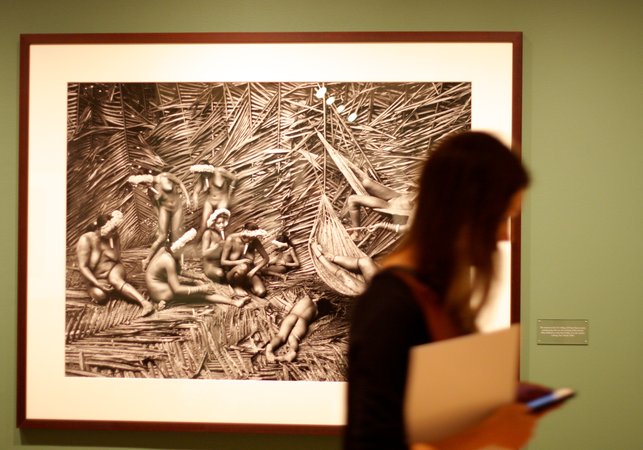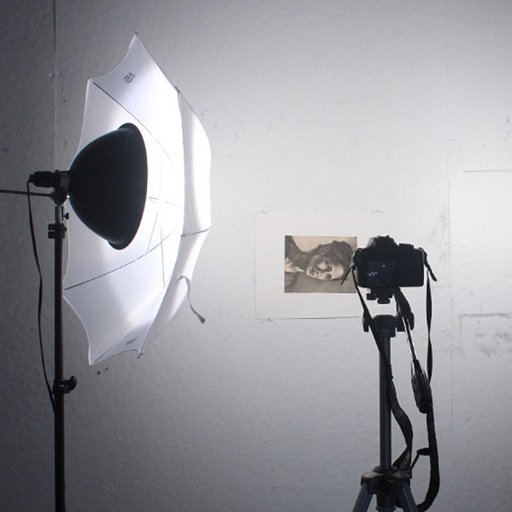For over three decades, the Brazilian photojournalist Sebastião Salgado pointed his lens at a single animal species: humans, and in particular ones who are dispossessed. Immortalizing a vast range of people, from gold miners at Brazil's Serra Pelada mine to Rajasthan women working as stone-haulers in India to starving villagers in Ethiopia, his remarkable documentary projects Workers (1993) and Migrations (2000) converted the crushing statistics he encountered as a Paris-trained economist into faces, tired and human.
Never one to take a shallow approach, Salgado spent seven and six years respectively on the previous projects, costing him a heavy emotional toll. “I was depressed by the brutality of our species,” Salgado said at a Cooper Union lecture in New York. In 2004, as part of a back-to-nature program, he turned his camera away from human social systems to pristine ecosystems: the 46 percent of the natural world yet uncorrupted by man. In keeping with his data-driven approach, he consulted another set of numbers—this time ones predicting climate change and recording our relentless environmental damage. Eight years in the making, the project Genesis captures countless life forms from across 32 countries, and is now on view for the first time in the United States at the International Center of Photography in New York through January 11. Here's how to understand this sweeping body of work.
ON THE ORIGIN OF SPECIES
Despite the title, this tour of Eden is more Darwinian in spirit than Biblical. Like a natural scientist, Salgado documents the scaly, taloned marine iguanas in the Galápagos Islands, chases the splashing tail of a whale on the Argentine coast—which he says eventually came to the boat like "a little dog”—and encounters a horned sheep-ox in Russia and a colony of penguins on the South Sandwich Islands. These 200 black-and-white statements of love for the planet submit fully to ecological nostalgia, intending to make us marvel at how the earth once was, and consider why its remaining wonders are worth saving today.
HE'S NOT AN ACTIVIST
The timing of the show's opening in New York was auspicious, coinciding with both the U.N. Climate Summit and the historic People’s Climate March in the city. But Salgado himself rejects the “activist” label as a photographer—for him, it’s a term reserved for his youth, when he protested in the streets of Brazil and contributed photos to Leftist publications in Paris. It might also describe his work with Instituto Terra, the 1,500-acre family cattle ranch in Brazil he and his wife, Lélia Wanick Salgado, who curated the show at ICP, began to reforest in 1998. The husband and wife have planted some 2.5 million trees to date.
In his photos, this particular brand of environmentalism, he says, simply reflects their way of life. Yet some two million eyes have seen Genesis in Brazil, Europe, Canada, and Singapore. Does he think it makes any difference? Nothing tangible, he says. His photos are “part of a movement—a much larger movement.”
… AND HE'S NOT AN ARTIST, EITHER Chinstrap penguins on icebergs located between Zavodovski and Visokoi Islands. South Sandwich Islands (2009)
Chinstrap penguins on icebergs located between Zavodovski and Visokoi Islands. South Sandwich Islands (2009)
Salgado is hostile to the term “artist,” too, even though his luminous, backlit photos are worthy of a 19th-century German Romantic painter. “[B]eing a photographer is much more than being an artist,” Salgado said at Cooper Union, playing to the crowd. He described “receiving”—his word—the pictures from nature, and compares his patient labors to fishing. In the licensed idleness and primeval solitude, he said, “you start to feel part of the huge movement of our planet, start to feel like we are nature.”
OUR INSENSITIVE EGOISM View of the junction of the Colorado and the Little Colorado from the Navajo territory. The Grand Canyon National Park begins after this junction. Arizona, USA (2010)
View of the junction of the Colorado and the Little Colorado from the Navajo territory. The Grand Canyon National Park begins after this junction. Arizona, USA (2010)
Today, Salgado thinks, city-dwellers like New Yorkers have been riven from the natural world. “We have no contact [with nature],” he said. “We don’t know the wind.” Compact and fit, the 70-year-old photographer urged the group at ICP to see the natural world afoot. Just five years before, Salgado himself trekked 500 miles across the Semien Mountains in Ethiopia for two months, accompanied by packs of donkeys, just as our ancestors did 5,000 years ago. “If we want to see the world, we must walk it,” he said, standing before photos of the magisterial Ethiopian highlands downstairs in the exhibition.
Upstairs, opening the show, a lonely iceberg floats on the Antarctic Channel, clouds hovering above the empty wind-sculpted palace. Its gate-like ice entrance welcomes, a kind of homecoming perhaps: We sprang from nature, and now we might reenter into it. “We must not have the pretention that we are the only rational animal on the planet,” Salgado said, surrounded by the many forms represented in the exhibition.
 Iceberg between Paulet Island and the Antarctic Channel. The Antarctic Peninsula (2005)
Iceberg between Paulet Island and the Antarctic Channel. The Antarctic Peninsula (2005)



























